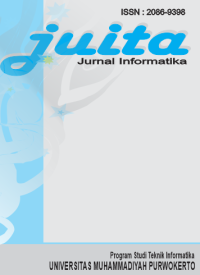Detail Cantuman
Advanced Search
Artikel Jurnal
A Deep Learning Using DenseNet201 to Detect Masked or Non-masked Face
Abstract
The use of masks on the face in public places is an obligation for everyone because of the Covid-19 pandemic, which claims victims. Indonesia made 3M policies, one of which is to use masks to prevent coronavirus transmission. Currently, several researchers have developed a masked or non-masked face detection system. One of them is using deep learning techniques to classify a masked or non-masked face. Previous research used the MobileNetV2 transfer learning model, which resulted in an F-Measure value below 0.9. Of course, this result made the detection system not accurate enough. In this research, we propose a model with more parameters, namely the DenseNet201 model. The number of parameters of the DenseNet201 model is five times more than that of the MobileNetV2 model. The results obtained from several up to 30 epochs show that the DenseNet201 model produces 99% accuracy when training data. Then, we tested the matching feature on video data, the DenseNet201 model produced an F-Measure value of 0.98, while the MobileNetV2 model only produced an F-measure value of 0.67. These results prove the masked or non-masked face detection system is more accurate using the DenseNet201 model.
Ketersediaan
| JUITA5a-014 | JUITA V9N1 Mei 2021 | Perpustakaan FT UPI YAI | Tersedia |
| JUITA5b-014 | JUITA V9N1 Mei 2021 | Perpustakaan FT UPI YAI | Tersedia |
| JUITA5c-014 | JUITA V9N1 Mei 2021 | Perpustakaan FT UPI YAI | Tersedia |
Informasi Detil
| Judul Seri |
JUITA : Jurnal Informatika
|
|---|---|
| No. Panggil |
JUITA V9N1 Mei 2021
|
| Penerbit | Universitas Muhammadiyah Purwokerto : Purwokerto., 2021 |
| Deskripsi Fisik |
hlm : 115-122
|
| Bahasa |
English
|
| ISBN/ISSN |
2086-9398
|
| Klasifikasi |
JUITA
|
| Tipe Isi |
-
|
| Tipe Media |
-
|
|---|---|
| Tipe Pembawa |
-
|
| Edisi |
Volume 9 Nomor 1 Mei 2021
|
| Subyek | |
| Info Detil Spesifik |
-
|
| Pernyataan Tanggungjawab |
-
|
Versi lain/terkait
Tidak tersedia versi lain







